A Siberian husky is typically full grown by the age of 1 to 1.5 years.
| Age at Full Size | 12 to 18 months |
|---|---|
| Weight – Males | 45 to 60 pounds (20 to 27 kg) |
| Weight – Females | 35 to 50 pounds (16 to 23 kg) |
| Height – Males | 21 to 23.5 inches (53 to 60 cm) |
| Height – Females | 20 to 22 inches (51 to 56 cm) |
| Physical Maturity | 18 to 24 months |
| Mental Maturity | Up to 36 months |
| Developmental Stages | Puppyhood to adolescence to adulthood |
| Activity Level | Remains high throughout life |
When is a siberian husky full grown
Siberian Huskies go through several distinct growth stages from puppies to adulthood. As a puppy, a Husky experiences rapid growth, both physically and mentally, during the first few months of life.
This is a crucial stage when proper nutrition and care play a vital role in their overall development. As they transition into the adolescent stage, typically around 6 to 12 months old, their growth rate gradually slows down, and they start to exhibit more adult-like behaviors.
It’s important to provide them with appropriate training and socialization during this stage to instill good habits and behaviors. Finally, as they reach adulthood at around 12 to 18 months, their growth stabilizes, and they reach their full physical and mental maturity.
This is when a Siberian Husky is considered to be full grown and displays the characteristic traits of the breed, including their distinctive appearance and temperament. During these growth stages, it’s crucial to monitor their health, diet, and exercise to ensure they mature into healthy adults..
To discover more about the physical stature and where Siberian Huskies fit in the spectrum of canine sizes, delve into our comprehensive exploration. Understand the top Husky size facts and determine whether they're classified as large breed dogs by navigating to Top Husky Size Facts Revealed.

Typical Growth Milestones
Siberian Huskies go through several growth milestones in their first year, which are indicative of their development. These milestones include the rapid growth phase during the first 6 months, when a Husky can double in size from birth.
This period is characterized by a high demand for nutrients and energy to support the rapid increase in size and development. After this initial growth spurt, Huskies gradually reach their full height by around 12 months, although they continue to fill out and gain muscle mass up to 18 months.
It’s important to monitor these milestones to ensure your Husky is growing healthily and receiving the appropriate nutrition and care. Proper weight gain, the emergence of adult teeth, and the development of a full and luscious coat are also significant markers of a Husky’s growth progression.
Additionally, behavioral changes and increased energy levels may accompany these milestones, signifying the transition from puppyhood to adulthood. Understanding these typical growth milestones is crucial for providing the best care and meeting the evolving needs of a growing Siberian Husky.
When is a siberian husky full grown
As Siberian Huskies grow, their development follows several key milestones in their first year, reflecting their transition from puppyhood to adulthood.
- The first 6 months mark a rapid growth phase, during which Huskies can double in size from birth, requiring high levels of nutrients and energy.
- By around 12 months, Huskies typically reach their full height, continuing to fill out and develop muscle mass until approximately 18 months.
- Monitoring weight gain, teeth development, coat growth, and changes in behavior is essential in tracking a Husky’s healthy growth progression.
.
To further your understanding of puppy development and care, delve into the common reasons behind the vocal distress of Husky puppies. Discover the nuances of their behavior by accessing the detailed exploration titled Understanding Your Husky Puppy's Cries.
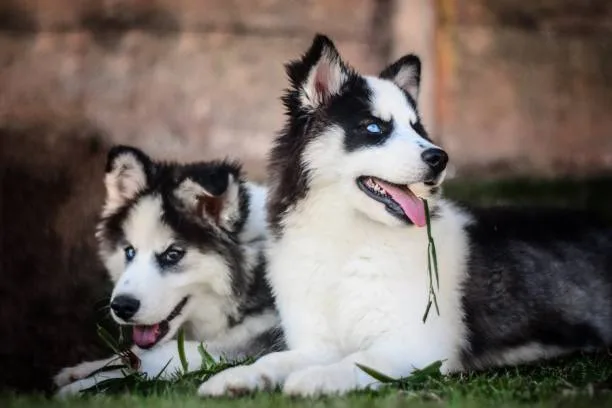
Full Grown: Age and Size
Siberian Huskies typically reach full physical maturity between the ages of 12 to 18 months. However, their mental maturity may continue to develop until they are around 2 to 3 years old.
At full maturity, a male Siberian Husky stands at around 21 to 23.5 inches tall at the shoulder, while females typically measure around 20 to 22 inches. In terms of weight, adult males usually weigh between 45 to 60 pounds, while adult females generally weigh between 35 to 50 pounds.
It’s important to note that each Husky is unique, and there may be slight variations in size and growth patterns.
When is a siberian husky full grown
During the first year, Siberian Husky puppies undergo rapid growth, and by the age of 6 months, they have usually reached a significant portion of their adult height.
However, their bodies continue to fill out and develop muscle mass up to the age of 2 years. It’s essential for owners to monitor their Husky’s growth and adjust their care and nutrition accordingly to support their transition into adulthood.
Understanding the growth patterns of Siberian Huskies is just one piece of ensuring their overall well-being. For insights into a balanced diet that supports their health as they reach maturity, explore our comprehensive guide on optimal nutrition and egg consumption for Huskies.
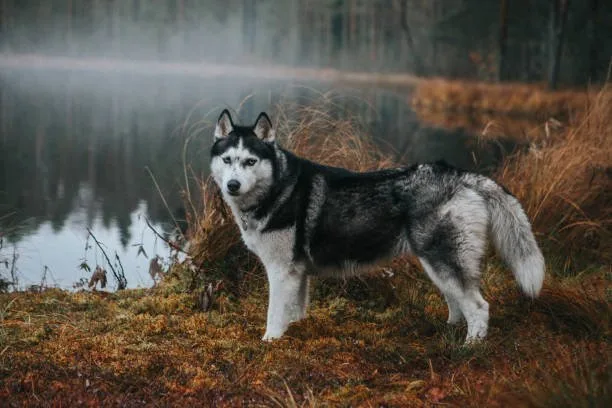
Physical Development
Siberian Huskies undergo significant physical development as they grow from puppies to adults. When is a siberian husky full grown? Typically, these majestic dogs reach their full physical maturity between the ages of 12 months and 18 months.
During this time, they experience notable changes in weight, height, and overall build. As puppies, they start out with a slender frame and weigh around 8-10 pounds.
However, as they reach adulthood, their weight increases to around 35-60 pounds for females and 45-70 pounds for males. Their height also transforms, with female Huskies reaching 20-22 inches and male Huskies typically growing to 21-24 inches at the shoulder.
Furthermore, their build becomes more robust and well-proportioned, displaying the distinctive strength and athleticism that is characteristic of this breed.
It’s essential for Husky owners to monitor their pet’s physical development closely during this period, ensuring that they receive proper nutrition and exercise to support this growth. By being attentive to their changing weight, height, and build, owners can ensure that their Huskies develop into healthy, well-built adults.
Understanding the physical transformations your body undergoes is critical to recognizing growth patterns. For those interested in exploring how to care for another kind of growth—training your Husky to gracefully navigate aquatic environments—dive into our detailed guide on introducing Huskies to swimming safely.
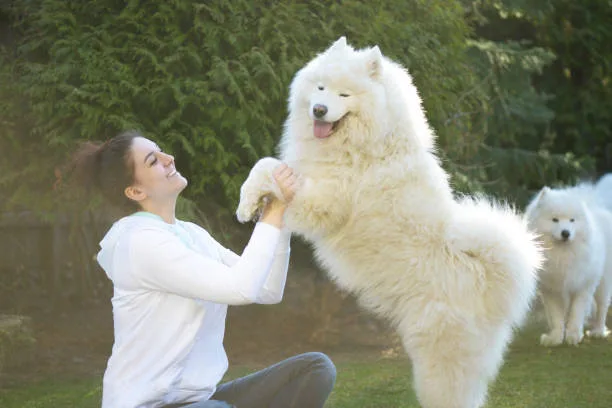
Sexual Maturity in Huskies
Siberian Huskies typically reach sexual maturity between 6 to 9 months of age. This is the stage when their reproductive organs fully develop, and they become capable of breeding.
It’s important for owners to be aware of this milestone, as unaltered Huskies may exhibit behaviors such as marking territory, increased roaming, and potentially aggressive tendencies, especially in males. Additionally, female Huskies may go into heat, which can lead to unwanted mating and potential pregnancy.
Therefore, it is crucial for owners to consider spaying or neutering their Huskies to mitigate these behaviors and prevent unintentional breeding. This decision not only helps in managing the Husky’s behavior and preventing overpopulation but also has potential health benefits for the dog, such as reducing the risk of certain reproductive-related cancers and infections.
However, it’s essential to consult a veterinarian to determine the most appropriate timing for this procedure based on the individual Husky’s health and development.
It’s crucial for owners to be aware of the age at which Siberian Huskies reach sexual maturity, as it can significantly impact their behavior and health. Unaltered Huskies may exhibit behaviors such as territorial marking and increased roaming, which can be managed through spaying or neutering.
Consultation with a veterinarian is essential to determine the best timing for this procedure based on the individual Husky’s health and development.
Understanding your Siberian Husky's developmental stages is crucial for providing proper care and attention as they mature. For strategies on how to ensure your furry friend stays comfortable during the hotter months, explore our article on maintaining a cool environment for your Husky in summer.
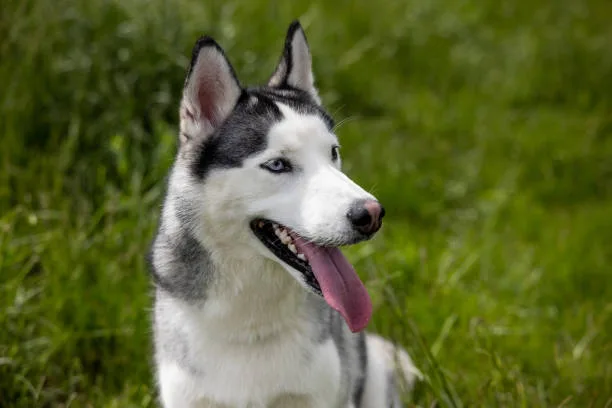
Behavioral Changes in Growing Huskies
As a Siberian Husky grows and reaches maturity, there are noticeable behavioral changes that accompany this developmental phase. Husky puppies are typically exuberant, curious, and highly energetic, often exhibiting a playfulness and occasional mischief that is characteristic of their youthful nature.
However, as they transition into adulthood, a shift in behavior may occur, marked by a more composed demeanor and a greater sense of independence. This transformation often manifests in a reduced level of hyperactivity and a heightened focus, making them more adept at following commands and displaying a stronger sense of loyalty to their owners.
Furthermore, as huskies mature, their social dynamics may evolve, leading to a more discerning approach to interactions with other dogs and individuals. This is a natural progression in their development, reflecting their instinctual tendencies as pack animals with a growing sense of maturity and responsibility.
On Quora about: When is a siberian husky full grown
During this period, it is important for owners to be mindful of their husky’s changing behavior and adapt their training and interactions accordingly.
Patience and consistent reinforcement of positive behaviors are key as their energy levels and attitudes undergo a discernible shift. As the husky’s behavior continues to evolve, regular exercise, mental stimulation, and socialization remain crucial elements in fostering a well-balanced and well-behaved adult husky.
Understanding the evolution of a Siberian Husky's temperament is essential for providing the right care and training throughout its life stages. Dive deeper into ensuring your Husky's well-being by exploring the American Kennel Club's guidelines for this spirited breed in the article, "Achieve Optimal Care for Your Siberian Husky."
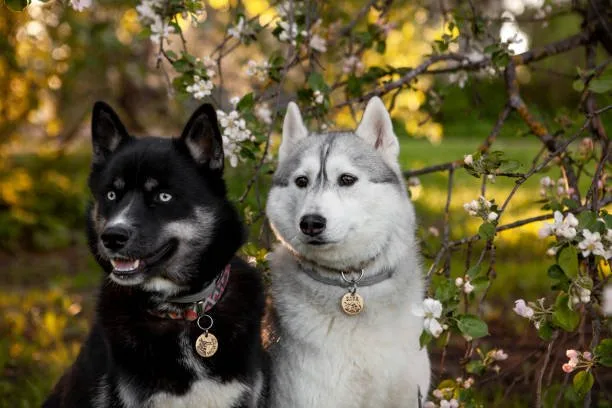
Nutrition for Optimal Growth
Proper nutrition is vital for the healthy growth and development of Siberian Huskies. When is a Siberian Husky full grown, it’s important to provide a balanced diet to support their optimal growth.
A high-quality dog food specifically formulated for large active breeds is recommended, ensuring it contains essential nutrients such as proteins, fats, carbohydrates, vitamins, and minerals. Additionally, incorporating fresh fruits and vegetables, and occasional lean meats can contribute to a well-rounded diet.
It’s essential to monitor portion sizes, adjusting according to the dog’s activity level and age to prevent overfeeding and obesity. Ensuring access to clean water at all times is equally imperative for their overall well-being.
Moreover, consulting with a veterinarian for personalized nutritional recommendations based on the individual Husky’s needs and growth stage is highly advisable.
When is a Siberian Husky full grown, it’s important to provide a balanced diet to support their optimal growth. A high-quality dog food specifically formulated for large active breeds is recommended, ensuring it contains essential nutrients such as proteins, fats, carbohydrates, vitamins, and minerals.
- Additionally, incorporating fresh fruits and vegetables, and occasional lean meats can contribute to a well-rounded diet.
- It’s essential to monitor portion sizes, adjusting according to the dog’s activity level and age to prevent overfeeding and obesity.
American Kennel Club: When is a siberian husky full grown
Ensuring access to clean water at all times is equally imperative for their overall well-being.
Moreover, consulting with a veterinarian for personalized nutritional recommendations based on the individual Husky’s needs and growth stage is highly advisable.
Ensuring your Siberian Husky is well-fed and healthy is just the beginning of their care journey. For comprehensive tips on grooming your furry companion, discover the art of bathing a husky puppy with expertise by visiting this thorough guide to a pup's bath time.

Exercise Requirements
Reddit When is a siberian husky full grown
Siberian Huskies have high energy levels and require ample exercise to maintain their health and well-being. Regular physical activity is crucial for the proper development of a growing Husky.
Adequate exercise not only promotes physical fitness but also helps to channel their energy in a positive way, reducing the likelihood of behavioral issues that may arise from pent-up energy. When is a siberian husky full grown, it is important to recognize that their exercise needs remain significant even into adulthood.
To ensure proper development, young Huskies should engage in at least 1-2 hours of exercise each day, gradually increasing as they grow. Activities such as running, hiking, and interactive play are excellent for meeting their exercise requirements and reinforcing the bond with their owners.
Additionally, mental stimulation through challenging activities and games should be incorporated into their routine to keep their agile minds engaged. Consistent exercise not only supports their physical well-being but also contributes to their overall happiness and contentment.
In summary, meeting the exercise needs of a growing Siberian Husky is paramount to ensuring their proper development, and this commitment to regular physical activity should continue into their adulthood..
For those seeking guidance on fostering harmony between a growing Siberian Husky and feline companions, we offer a comprehensive guide. Discover practical strategies for nurturing positive interactions between these distinct animals by visiting "Train Your Husky to Be Cat-Friendly: Essential Tips & Techniques."
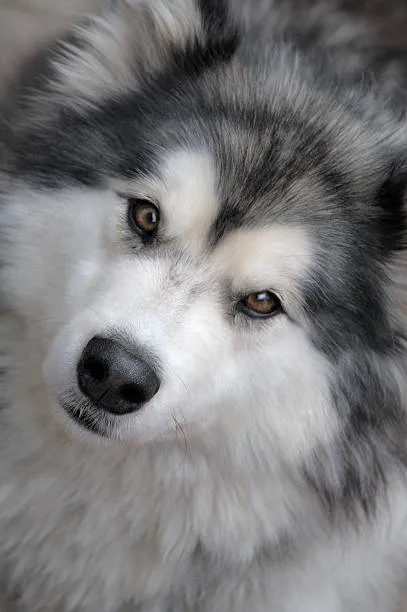
Health Considerations During Growth
During the growth stages of a Siberian Husky, it is crucial to be mindful of certain health considerations. As a Husky matures, it is essential to monitor their joint health and ensure that they are not experiencing any developmental issues.
Additionally, it’s important to keep an eye on their dental health, as proper dental care is vital for their overall well-being. Regular veterinary check-ups are recommended to address any potential health concerns that may arise during this period.
Furthermore, it’s essential to maintain a balanced diet to support the Husky’s growth and development.
Proper nutrition is key in preventing obesity and other weight-related issues that can affect their health in the long run. Ensuring that they receive adequate exercise is also crucial for their overall health and well-being.
It helps to support their physical development and prevent any potential musculoskeletal problems.
- Monitor joint health and development
- Prioritize dental care and regular veterinary check-ups
- Maintain a balanced diet and regular exercise regimen
.
To ensure your Husky's well-being, staying informed about potential health concerns is just the first step. Equip your furry friend with the perfect harness for a comfortable and safe growth journey by exploring our detailed guide on the top-rated dog harnesses specifically designed for Huskies.
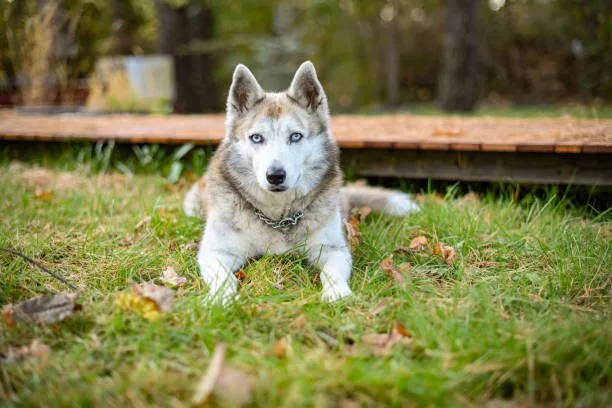
Genetic Factors Affecting Growth
Genetic factors play a significant role in determining the growth and final size of a Siberian Husky. The genetics of a Husky, inherited from their parents, can influence various physical characteristics, including their height, weight, and build.
These genetic factors establish the potential for the dog’s growth and development, shaping their overall size and appearance as they reach maturity. Additionally, genetic traits can also impact the susceptibility to certain health conditions, which may influence the overall well-being of the Husky as it grows.
Understanding the genetic predispositions of the breed can provide insights into what to expect in terms of growth and size, helping owners better care for their Siberian Husky throughout its life.
Genetic factors have a significant impact on a Siberian Husky’s growth and final size, influencing various physical characteristics and potential health issues.
To delve deeper into the developmental journey of a Siberian Husky, explore our comprehensive article that details the age at which they reach full maturity. Gain insights into this majestic breed's growth timeline by reading, "Understanding the Growth: When is a Husky Fully Grown?"
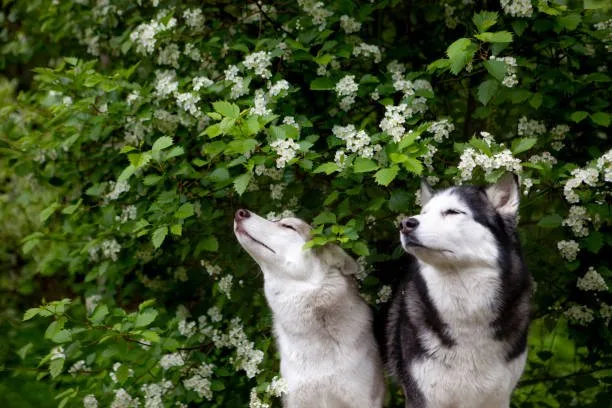
Neutering/Spaying and its Impact on Growth
Neutering or spaying a Siberian Husky can have an impact on their growth and development. When is a Siberian Husky full grown, in the context of neutering or spaying, is a common concern for many dog owners.
Neutering or spaying a Husky can lead to a slight increase in weight due to changes in metabolism and energy levels, but it typically does not significantly affect their overall size. However, it is important to note that the impact of neutering or spaying on growth can depend on various factors, including the age at which the procedure is performed.
It’s advisable to consult with a veterinarian to understand the potential effects of neutering or spaying on a Husky’s growth and to make an informed decision based on individual circumstances and health considerations.
Neutering or spaying a Husky can also have potential benefits in terms of preventing certain reproductive-related health issues, as well as contributing to population control and responsible pet ownership. However, it’s essential to weigh these benefits against any potential impact on growth and development, and to consider the overall well-being of the Husky when making such a decision.
For those interested in additional canine behaviors and solutions, a related topic addresses the reasons behind Labrador Retrievers biting their paws and nails, offering actionable advice for pet owners. Explore this comprehensive guide to understanding and resolving such behaviors in 'Why Dogs Bite Paws/Nails: Reasons & Solutions for Labs!' Exploring Canine Behaviors: Labrador Paw and Nail Biting.
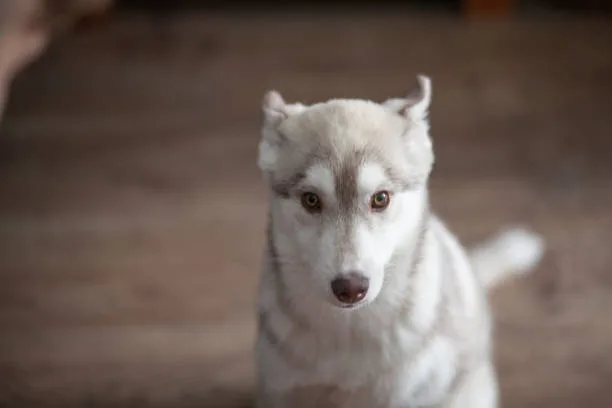
Common Misconceptions About Husky Growth
There are several misconceptions surrounding the growth of Siberian Huskies, and it’s essential to debunk these myths to ensure accurate understanding and care for these majestic dogs. One common misconception is that small size indicates stunted growth, but in reality, some Huskies are naturally smaller and still reach full maturity.
Another misconception is that rapid growth equals a healthier dog, when in fact, steady and controlled growth is preferable to avoid potential bone and joint issues. It’s also a common belief that neutering or spaying will significantly alter a Husky’s growth pattern, but in truth, the impact is minimal, and responsible spaying or neutering can have positive health benefits for the dog.
It is important to understand these misconceptions to provide the best care for a growing Siberian Husky and to ensure that they reach their full potential in a healthy manner.
By addressing these misconceptions, owners can better understand how to support their Husky’s growth and development without being misled by common myths in the process.
To further enhance your understanding of canine companionship, explore the multitude of ways pets positively impact our well-being. Delve into the comprehensive article on the Health Benefits of Human-Animal Interactions for a deeper insight into the enriching bond between humans and animals.
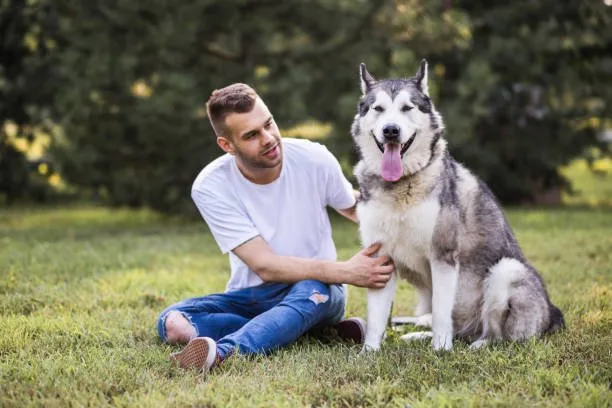
Knowing Your Husky is Fully Grown
Recognizing when a Siberian Husky is fully grown is essential for providing appropriate care. One of the key indicators that a Husky has reached physical maturity is when they have stopped gaining both height and weight.
Typically, this occurs when a Husky is around 12 to 18 months old. You can also observe the closure of growth plates in their bones through X-rays, which signals the end of their growth phase.
Another sign of maturity is a stable and fully developed temperament, which can indicate that they have finished their developmental phase. Observing these physical and behavioral markers will help you understand when your Husky has reached full growth and needs to transition to an adult care regime.
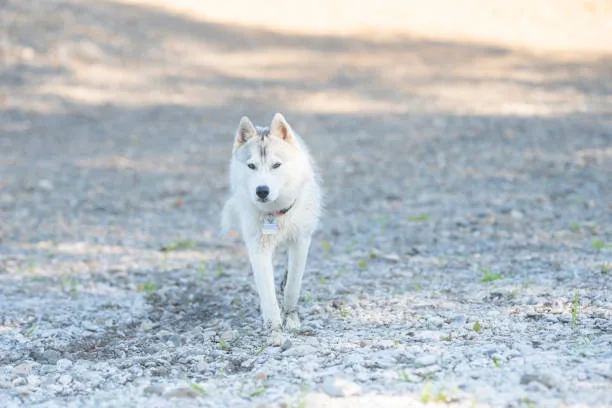
Responsible Care for a Full Grown Husky
Once a Siberian Husky has reached its full size, it’s important to maintain a responsible level of care to ensure their well-being throughout their adult life. Providing regular veterinary check-ups for early detection of any health issues is essential.
This includes staying up to date with vaccinations and preventive medications to safeguard against common ailments. Additionally, maintaining a balanced diet tailored to their specific nutritional needs as an adult dog is crucial in preventing obesity and promoting overall health.
Engaging in regular exercise to keep them physically and mentally active is paramount. Huskies thrive on routine and consistent training to reinforce good behavior and maintain their mental acuity.
Creating a comfortable and safe living environment, with access to shelter and a secure outdoor space, is vital for their physical and emotional well-being. Lastly, providing them with ample love, attention, and companionship will ensure a fulfilling and happy life for your now full-grown Siberian Husky.
Ensuring regular veterinary check-ups and vaccinations for preventive care
Maintaining a balanced diet and exercise routine tailored to adult Husky needs
Consistent training and mental stimulation to reinforce good behavior
Creating a safe and comfortable living environment
Providing love, attention, and companionship for a happy adult Husky
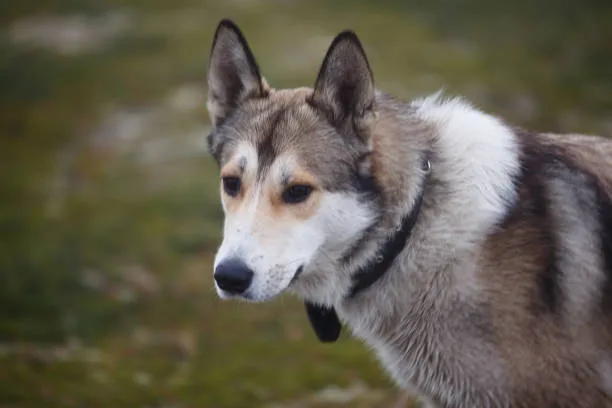
Husky Health and Nutrition
Siberian Huskies require a well-balanced diet to ensure their overall health and vitality. When is a Siberian Husky full grown, it becomes crucial to focus on their nutrition.
Choosing the right dog food for adult Huskies is essential. Look for high-quality, protein-rich options that cater to their energy needs and support muscle maintenance.
Additionally, it’s important to address common health issues such as hip dysplasia and obesity by providing a balanced diet. A diet with the right proportion of nutrients can aid in preventing obesity and maintaining robust health throughout each stage of a Husky’s life.
It’s essential to consult with a veterinarian to ensure that the diet plan meets the specific nutritional requirements of a full-grown Siberian Husky.
Opting for high-quality, protein-rich dog food is essential to meet the energy needs and support muscle maintenance in adult Huskies.
- Choosing the right dog food for adult Huskies is crucial for their overall well-being.
- Addressing common health issues like hip dysplasia and obesity can be supported by providing a balanced diet.
- A balanced diet aids in preventing obesity and maintaining robust health throughout all life stages of Huskies.
Consulting with a veterinarian is important to ensure the diet plan meets the specific nutritional requirements of a full-grown Siberian Husky.
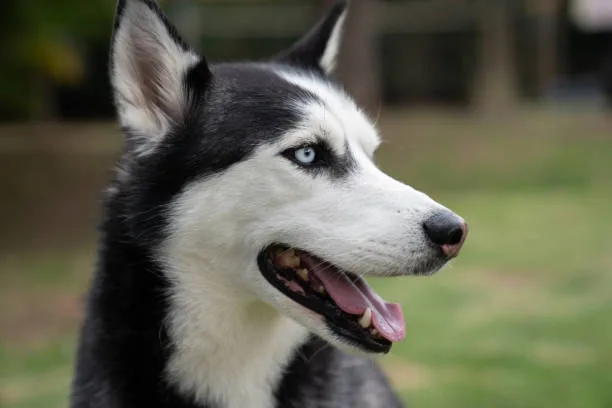
Exercise and Training Essentials for Huskies
Siberian Huskies are known for their high energy levels and need for regular exercise to maintain their overall health and well-being. Proper physical activity is key to keeping these energetic dogs happy and ensuring healthy joint development.
Regular exercise not only supports their physical health, but also plays a significant role in their mental stimulation and behavior. Adequate exercise helps to channel their energy in a positive way, preventing destructive behaviors that may arise from boredom or excess energy.
Therefore, it is essential to provide them with ample opportunities for physical activity, such as daily walks, runs, or engaging in activities like agility training. Additionally, effective training and socialization tailored to their specific temperament and needs is crucial in promoting good behavior and responsiveness to commands.
Mental stimulation activities, such as puzzle toys and interactive play, should also be incorporated into their routine to keep their minds engaged and sustain their well-behaved nature. Regular training exercises not only ensure the safety and comfort of the Husky, but also strengthen the bond between the dog and its owner, leading to a harmonious and cooperative companionship.
Therefore, understanding and fulfilling the exercise and training needs of a Siberian Husky are vital for their holistic development and maintaining a balanced lifestyle.
Regular exercise not only supports their physical health, but also plays a significant role in their mental stimulation and behavior.
- Proper physical activity is key to keeping these energetic dogs happy and ensuring healthy joint development.
- Adequate exercise helps to channel their energy in a positive way, preventing destructive behaviors that may arise from boredom or excess energy.
Effective training and socialization tailored to their specific temperament and needs is crucial in promoting good behavior and responsiveness to commands.
- Mental stimulation activities, such as puzzle toys and interactive play, should also be incorporated into their routine to keep their minds engaged and sustain their well-behaved nature.
- Regular training exercises not only ensure the safety and comfort of the Husky, but also strengthen the bond between the dog and its owner, leading to a harmonious and cooperative companionship.
.
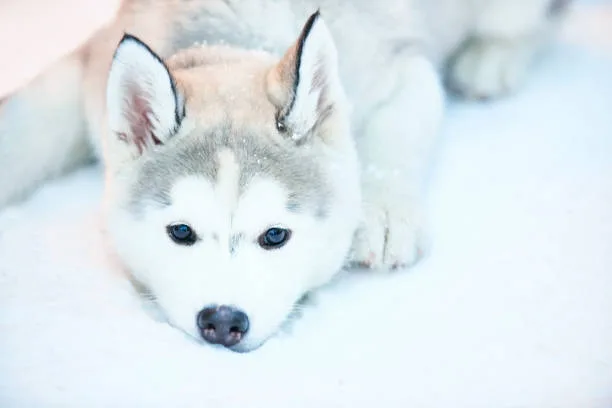
Understanding Husky Growth and Maturity
Siberian Huskies typically reach full physical and behavioral maturity between 12 and 18 months of age. However, their mental maturity may continue to develop up to around 2 years of age.
At full growth, a male Siberian Husky generally stands between 21 and 24 inches tall at the shoulder, while females range from 20 to 22 inches. In terms of weight, males typically weigh between 45 and 60 pounds, and females weigh between 35 and 50 pounds.
It’s important for owners to be aware of these average measurements, as they give a good indication of a healthy and fully grown Siberian Husky. Spaying or neutering can affect a husky’s growth if done too early, potentially leading to longer limbs and a narrower chest.
Despite the widely accepted practice of neutering or spaying around 6 months of age, it’s crucial to consider the specific growth and development trajectory of your individual husky before making a decision. It’s essential to monitor a husky’s weight and condition regularly to ensure they are within healthy ranges for their breed.
This includes observing their body shape and being mindful of any excessive weight gain or loss, as these can impact their overall health. Ensuring a Siberian Husky’s growth and development are in line with breed standards is vital for their well-being and longevity.
Siberian Huskies typically reach full physical and behavioral maturity between 12 and 18 months of age. However, their mental maturity may continue to develop up to around 2 years of age.
At full growth, a male Siberian Husky generally stands between 21 and 24 inches tall at the shoulder, while females range from 20 to 22 inches. In terms of weight, males typically weigh between 45 and 60 pounds, and females weigh between 35 and 50 pounds.
It’s important for owners to be aware of these average measurements, as they give a good indication of a healthy and fully grown Siberian Husky.
Spaying or neutering can affect a husky’s growth if done too early, potentially leading to longer limbs and a narrower chest. Despite the widely accepted practice of neutering or spaying around 6 months of age, it’s crucial to consider the specific growth and development trajectory of your individual husky before making a decision.
It’s essential to monitor a husky’s weight and condition regularly to ensure they are within healthy ranges for their breed. This includes observing their body shape and being mindful of any excessive weight gain or loss, as these can impact their overall health.
Ensuring a Siberian Husky’s growth and development are in line with breed standards is vital for their well-being and longevity.

Grooming and Coat Care for Huskies
Siberian Huskies have a dense double coat that requires regular grooming to keep it healthy and free from matting. Brushing their coat at least 2-3 times a week helps to remove loose fur and prevent tangles, especially during shedding seasons.
A slicker brush and undercoat rake are essential tools for managing their double-coated fur, as they effectively remove loose hair without damaging the topcoat. Additionally, during heavy shedding periods, a deshedding tool can be used to reduce shedding and keep the coat in good condition.
Bonding with a mature Husky during grooming sessions is important for their mental and emotional well-being. It’s an opportunity for quality time together, and regular grooming sessions can also help to detect any skin issues early on, ensuring proper coat care and overall skin health for the Husky.
Regular grooming is essential for maintaining the health of a Siberian Husky’s dense double coat.
It is important to brush their coat at least 2-3 times a week to remove loose fur and prevent tangles, especially during shedding seasons. Using a slicker brush, undercoat rake, and deshedding tool helps manage their double-coated fur effectively.
Bonding with a mature Husky during grooming sessions is key for their mental and emotional well-being.
It’s a great opportunity for quality time together, and regular grooming sessions also enable early detection of any skin issues, ensuring proper coat care and overall skin health for the Husky.
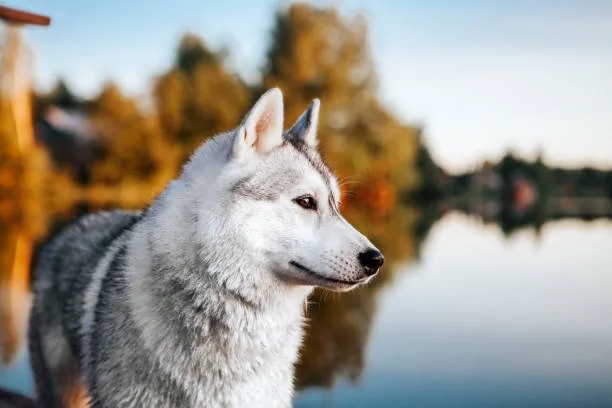
Lifestyle and Health Management for Adult Huskies
As an adult Siberian Husky, it’s crucial to consider their lifelong care, starting with a recommended vaccination schedule to safeguard against common canine illnesses. Genetic health concerns specific to the breed should also be monitored closely to ensure early detection and management when necessary.
Outdoor activities play a significant role in meeting a Husky’s high exercise requirements, so engaging in vigorous exercises such as running, hiking, or recreational sledding can be beneficial. Establishing a well-rounded routine that not only caters to their physical needs but also stimulates them mentally is pivotal for their overall well-being.
This may include interactive play, challenging training sessions, and puzzle toys to keep their sharp minds engaged. Additionally, forming a lasting bond with your mature Husky involves spending quality time together through activities like grooming, long walks, and positive reinforcement training methods, fostering a strong and enduring connection.
- Recommended vaccination schedule
- Genetic health concerns specific to the breed
- Engaging in vigorous outdoor activities
- Establishing a routine that caters to physical and mental needs
- Forming a lasting bond through quality time and positive reinforcement
.
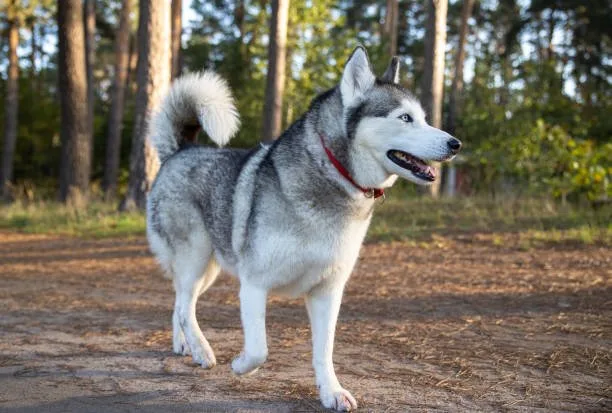
Conclusion
As a responsible owner, it’s crucial to understand the growth stages and lifespan of a Siberian Husky. From the early puppyhood to adulthood, a Husky experiences significant physical and behavioral changes.
Knowing when a Siberian Husky is full grown is essential for providing proper care and meeting their specific needs at each stage of life. Additionally, recognizing the signs of full maturity allows for appropriate adjustment in diet, exercise, and overall healthcare.
This comprehensive knowledge forms the foundation for building a strong and enduring bond with your fully grown Siberian Husky, providing them with a loving and nurturing environment while ensuring their overall well-being and happiness..


Leave a Reply